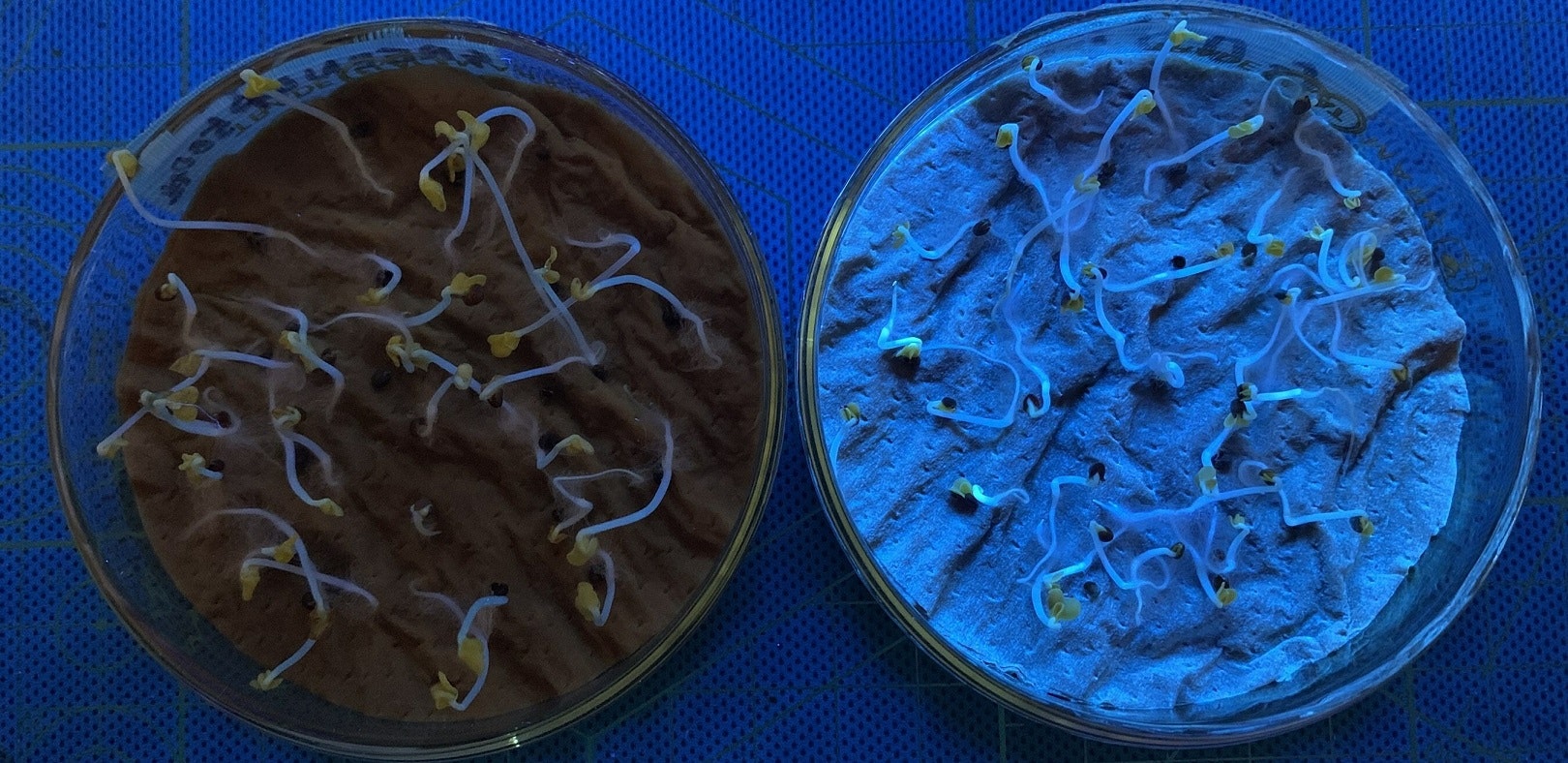Green Science Alliance develops fluorescent fertilizer

Green Science Alliance has developed fluorescent fertilizer with their quantum dot. They succeeded in growing fluorescent plants (Japanese mustard greens) from seeds using this fluorescent quantum dot nano fertilizer (QDNF).
When the particle size of the fertilizers is in the range of nanometers, the fertilizers can run through the path between plant cells; hence, the fertilizers can be absorbed in plants without the assistance of bacteria decomposition.
Nano fertilizers can be absorbed in plants not only from the soil but also from leaves; hence, farmers apply nano fertilizers on plant leaves by simply spraying from above using a drone, which is possible when liquid fertilizers are used. Nano fertilizers contain not only fertilizer components but also components of the pesticides, herbicides and metals required for plant growth within nanoparticles or on the surface. Furthermore, some studies have reported that recombinant genes can be introduced into plants by using nano fertilizers as the gene carrier.
According to Green Science Alliance engineer Dr. Ryohei Mori, quantum dots are super tiny materials (0.5–9 nm) with optical properties that follow the rules of quantum chemistry and quantum mechanics. These quantum dots are called "artificial atoms or artificial molecules" because each quantum dot comprises several dozen to thousand number of atoms or molecules. “At this size range, the energy levels of electrons are no longer continuous and are separated due to the physical phenomenon known as the quantum confinement effect. Under this condition, the wavelength of emission light depends on the size of the quantum dot.”
Mori has synthesized graphene quantum dots with chemical composition comprising the three key fertilizer elements: nitrogen, phosphorus and potassium. According to a company news release, when this quantum dot fertilizer is applied to the seeds of the Japanese mustard greens plants, they grow as much as they would with the use of a commercial liquid fertilizer. In addition, the as-grown plant exhibits fluorescence under ultraviolet-light and blue light irradiation, indicating that QDNF is absorbed in plant bodies during their growth.
“To the best of our knowledge, there has been no successful report of growing actual plants (not animal or fungus) that emit fluorescence, which is clearly recognized by the naked eye,” noted Mori. However, he added that some studies have reported luminescent plants by artificially embedding nanoparticles or luminescent bacteria into plant bodies. In addition, some rare examples exist; for example, some plants, such as Mirabilis, emit fluorescent light.
Mori said QDNF exhibits several advantages over commercial solid and liquid fertilizers: QDNF can function as plant stress sensors because the fluorescent light of some quantum dots disappears when they react with substances, such as H2O2, Ca2+, and NO, which are generated by stress in plants body; QDNF can be a pesticide, herbicide and an antibacterial residue sensor because the fluorescence of some quantum dots disappears when they react with pesticide residues, such as diazinon, glyphosate, and semicarbazide, triazine and aromatic pesticides, as well as heavy toxic metals; QDNF can be a metal (e.g., Zn, Cu, and Fe) carrier into plants; and, quantum dots on plant leaves can convert solar light into the light with a wavelength more favourable for plant growth.
Mori and his team are now looking to develop quantum dot nano fertilizer products.
Photo: Japanese musterd greens grown with commercial fertilizer (left) and quantum dot type nano fertilizer (right) on experimental petri dish. Photo: Dr. Ryohei Mori
Read the NOV/DEC 2022 issue of New AG International’s leading quarterly title, here.